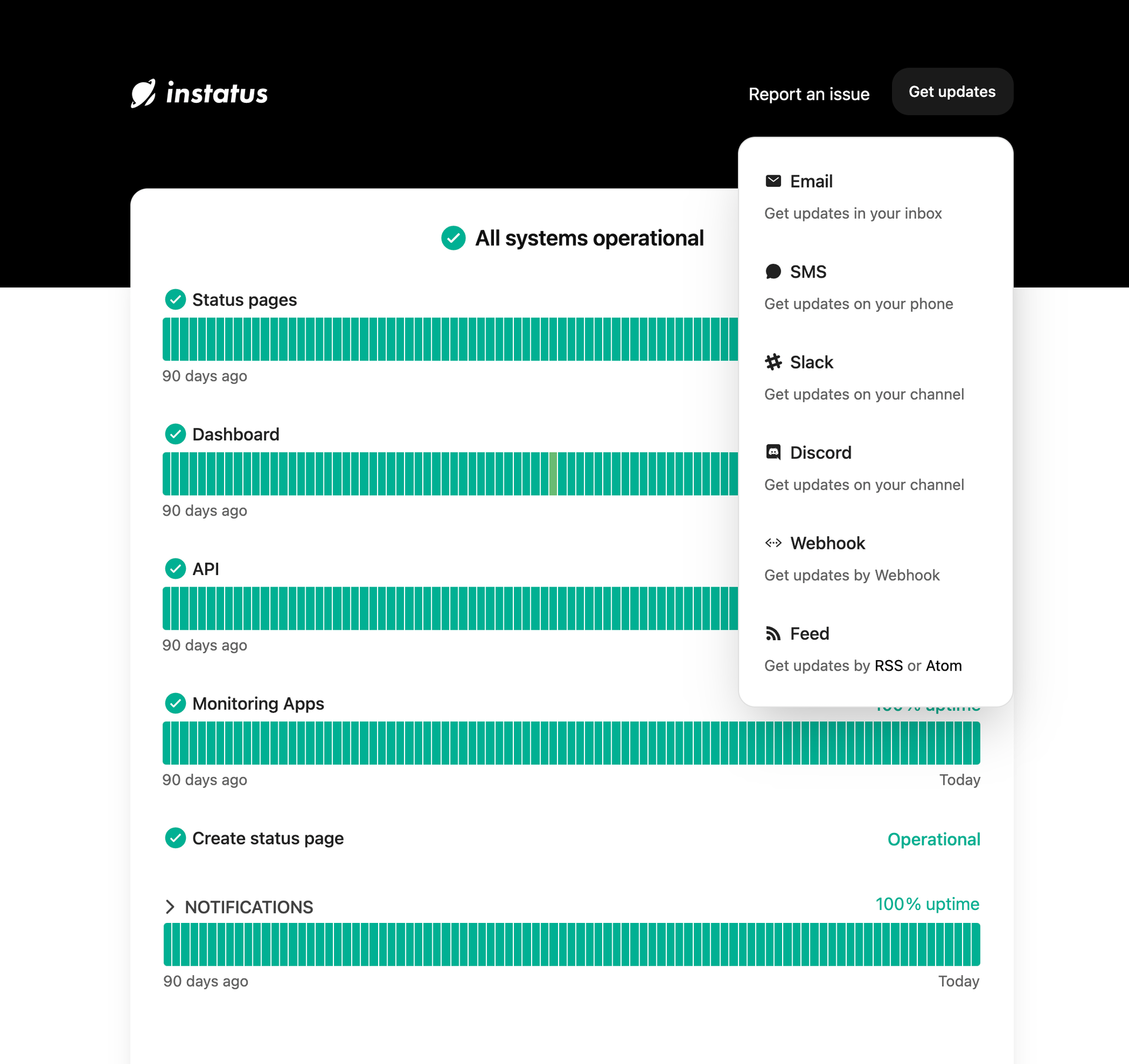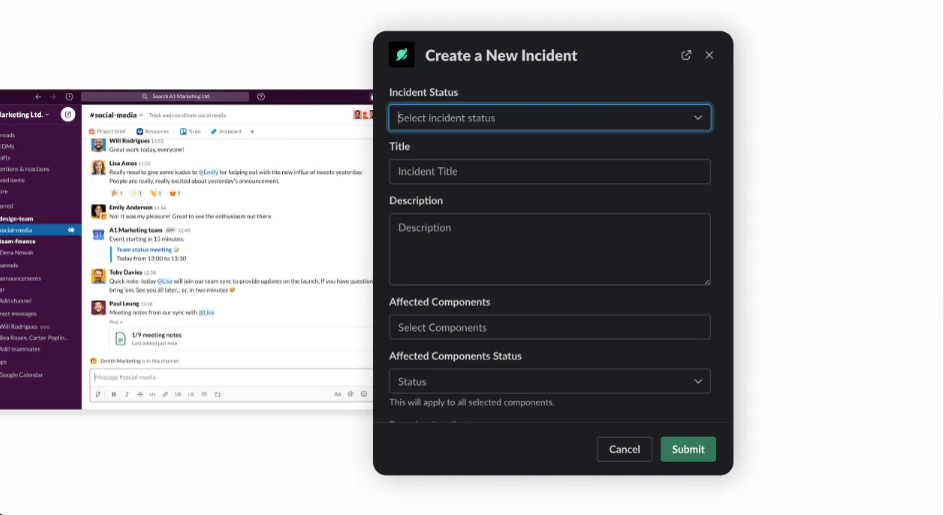How Do Agile and DevOps Interrelate?

According to data from Statista, 47% of software development teams mainly use DevOps and 37% mainly use an agile methodology.
What this data tells us is that DevOps and agile are the two most common approaches to software development. What this data *doesn't *tell us is the percentage of teams that are using both DevOps and agile in combination—something that’s actually very common.
Understanding how agile and DevOps interrelate can dramatically improve the efficiency and effectiveness of your development team. In this Instatus guide, we'll be discussing how DevOps and agile methodology can be used in tandem to create a powerful software development environment.
Ready to streamline your software development? Let's get started.
What Is Agile?
Agile is an approach to project management and software development that follows a set of values and principles outlined in the grandly titled Manifesto for Agile Software Development
In broad strokes, agile is founded on the idea that software should be developed (and delivered) in small, bite-sized rather than large, overwhelming chunks. The idea is that these smaller-scale deliveries improve a number of aspects of software development, including:
- Responsiveness: Agile encourages software teams to be flexible and responsive to change, rather than following a rigid plan.
- Communication: With agile development, communication among team members is essential in order for the project to succeed.
- Collaboration: Agile requires teams to take user feedback and experiences into account.
- Speed: Agile allows teams to deliver working software more quickly than traditional approaches.
What Is DevOps?
DevOps is notoriously tricky to sum up succinctly. If you're looking for a comprehensive definition, check out our ultimate guide to DevOps
In essence, though, DevOps is an approach to software development that emphasizes collaboration between development teams and operations teams. The ultimate goal of DevOps is to automate (or at least streamline) the process of *delivering *software and *integrating *it into its environment.
Unlike agile, DevOps does not focus on the development process itself—rather, it’s focused on how quickly and efficiently you can get your software from development to production.
Agile vs. DevOps: Common Misunderstandings
Agile and DevOps are two distinct approaches to software development with quite different goals.
That said, agile and DevOps do have some overlap. For example, both approaches encourage collaboration, communication, and responsiveness to change. The key difference is that DevOps emphasizes the delivery side of software development—how you get your software from development to production—while agile is focused on the development process.
Therefore, it would be wrong to say that agile and DevOps are competing approaches, or that one should replace the other. In fact, they’re complementary: combining agile development with DevOps delivery gives you the best of both worlds.
Why? How? Don't worry—we're getting to all that!
Why Does the Connection Between Agile and DevOps Matter?
Create Better Products Faster
Combining agile methodologies with the DevOps approach is a highly effective way to create software that meets (and exceeds) the expectations of users.
The idea is to gather feedback from users as quickly as possible, then use agile techniques to quickly iterate and improve your software. By using DevOps to deliver new versions of the software in a controlled environment, you can ensure that the changes you’re making are not just beneficial, but don’t introduce any new problems.
Ultimately, this allows you to create better products faster, with less risk and more user satisfaction.
Simplify Complex Development Projects
Development projects can be complex, and agile plus DevOps can help simplify the process.
By breaking down large tasks into smaller chunks, you make them easier to manage and test. And by automating the delivery process, you can make sure that each of those chunks is making its way into production in a safe and controlled manner.
In other words, agile plus DevOps makes it easier to manage complex software development projects—so you can be confident that your project will succeed.
Save Time and Money
Both agile and DevOps are all about streamlining processes, so it’s only natural that combining the two approaches can save you time and money.
With agile plus DevOps, teams can quickly get working software into production with less manual effort. This, in turn, allows teams to save time and money on software development—allowing companies to focus their resources on innovation, rather than mundane tasks.
Ultimately, agile plus DevOps is a powerful way to maximize efficiency and minimize waste in the software development process.
How Do DevOps and Agile Interrelate?
Planning, Coding & Building
Let's start simple—agile and DevOps can help teams plan, code, and build software quicker and more reliably.
With agile, teams can break down complex tasks into smaller chunks (called “sprints”), making them easier to manage. This allows teams to move quickly and adjust course if needed.
Meanwhile, DevOps can automate the delivery process, ensuring that each of those chunks makes its way into production quickly and safely. This helps teams save time and money on manual tasks, and guarantees that the software is not introducing any new problems.
Testing & Deployment
Testing is a *hugely *important part of the DevOps process—so important that we've written a guide for DevOps testing. It allows teams to quickly and reliably identify any issues with their product before they reach users.
How does agile fit in?
Agile can help teams ensure that their tests are up-to-date and relevant to the code they’re working on. By continually adapting development plans and testing strategies to the actual code, teams can make sure that each release is as stable and reliable as possible.
In other words, agile helps teams create and maintain high-quality tests, while DevOps helps teams deploy those tests reliably and quickly.
Monitoring & Maintenance
Monitoring and maintenance are also key parts of the DevOps process. With monitoring, teams can track the performance, usage, and availability of their software and identify any issues quickly.
Again, agile can help here. By iteratively optimizing the code and tests, teams can make sure that their software is as reliable and as efficient as possible. Teams can target small-scale optimizations that get them the most bang for their buck when it comes to user experience and performance.
Speaking of monitoring…
A status page is an invaluable tool for monitoring and keeping users up-to-date on the status of your product and services. Instatus makes creating a custom status page a breeze—giving you the power to monitor, inform, and delight your users.
Combining Core Technologies
Companies uses tons of different tools to develop software—from agile project management tools to DevOpsaaS platforms. To see the combined benefits of agile and DevOps, teams need to be able to integrate these core technologies within the development process.
This can take a bunch of different forms depending on the team structure and tools. For example, your team might integrate its project management tool with their DevOps platform, allowing them to automatically schedule deployments based on sprints.
This idea is something we really believe in at Instatus. That's why we've worked hard to add 20+ integrations with a huge range of popular tools and apps, like:
These integrations help teams streamline their workflow, making it easier for them to bring software into production with confidence.
Start Reaping the Benefits of Agile and DevOps
Agile plus DevOps is a powerful combination for software development teams—and now you know how to start leveraging it.
By breaking down tasks into smaller chunks, automating delivery processes, and integrating core technologies, teams can save time and money on manual tasks while bringing high-quality software into production quickly and reliably.
And if you're looking for the perfect tool to help you do all this, Instatus is here for you! Our custom status page platform makes it easy to monitor, inform, and delight your users—and it integrates with a huge range of popular tools and apps.
Ready to get started? Try Instatus for free today!
Get ready for downtime
Monitor your services
Fix incidents with your team
Share your status with customers



